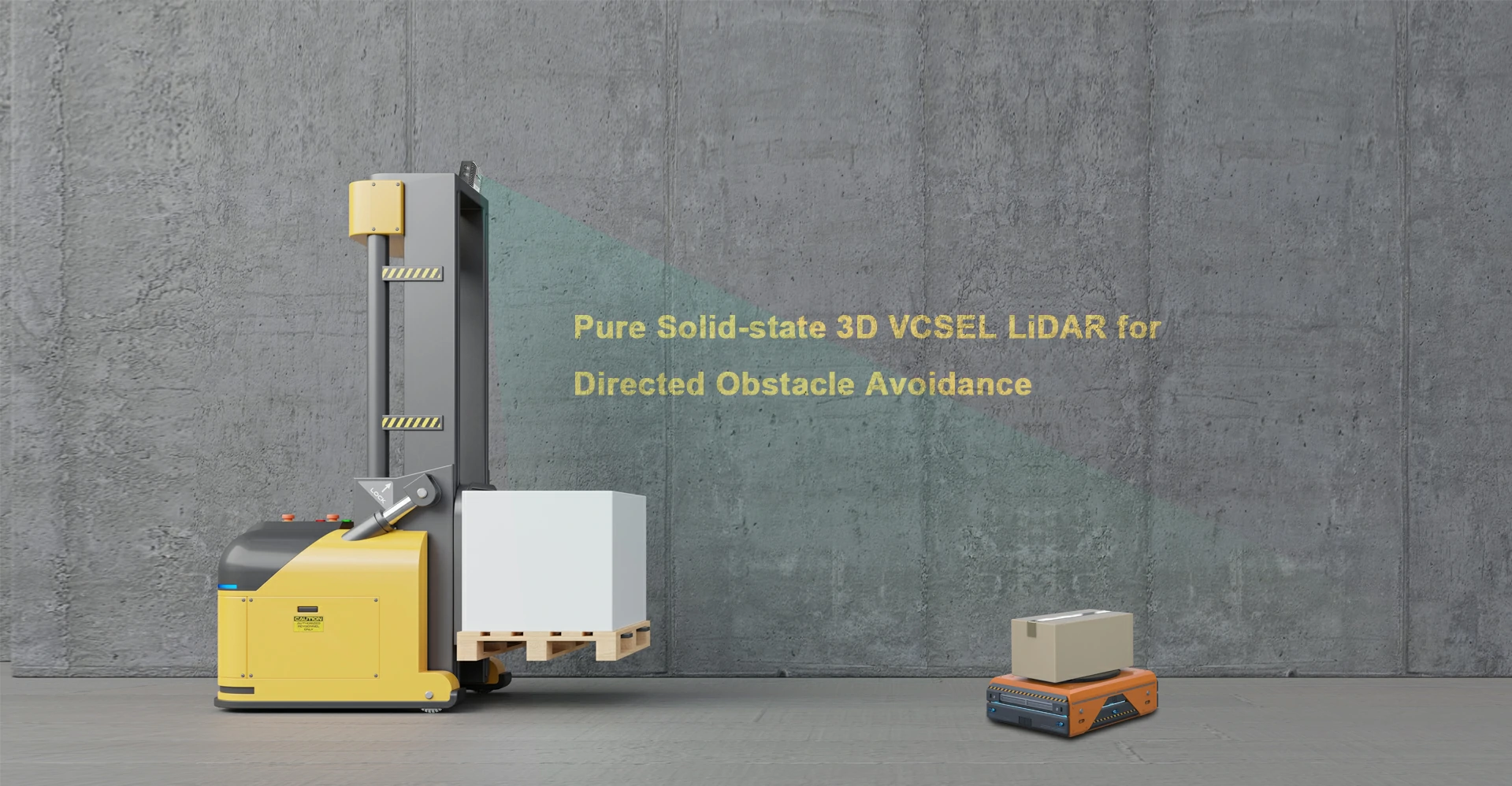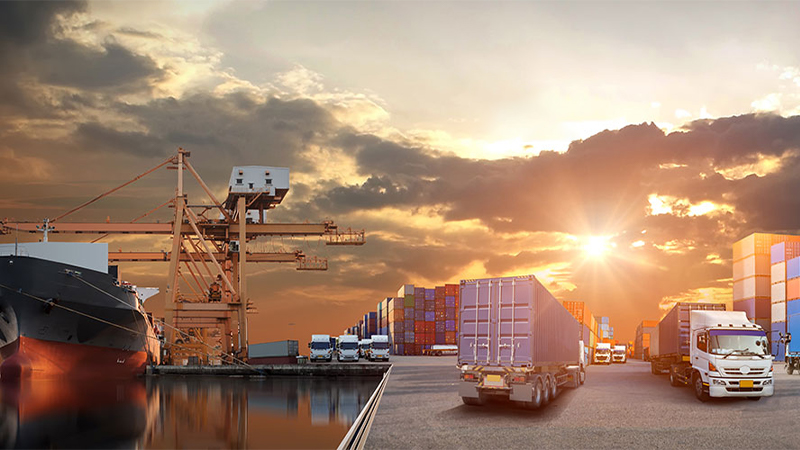Improving Efficiency and Safety in Ports with LiDAR-Based Automation Solutions
Author: Release time:2024-03-27 09:05:14
Ports play a crucial role in global trade, serving as hubs for the movement of goods between countries. With the increasing volume of cargo being handled at ports worldwide, there is a growing need for efficient and safe operations to ensure smooth and timely delivery of goods. One technology that is revolutionizing port operations is LiDAR-based automation solutions. In this blog post, we will explore how LiDAR technology is improving efficiency and safety in ports.
How LiDAR-Based Automation Solutions are Transforming Ports?
A. Enhancing Efficiency with LiDAR-Based Automation Solutions
One of the key advantages of using LiDAR-based automation solutions in ports is their ability to streamline operations and increase efficiency. By providing real-time data on vessel movements, container locations, and other critical information, LiDAR systems enable port operators to optimize their workflows and make informed decisions quickly.
1. Automated Container Handling

LiDAR sensors installed on cranes can accurately detect the position and orientation of containers on ships or storage yards. This information allows automated cranes to pick up containers more efficiently without human intervention, reducing loading/unloading times significantly.
2. Traffic Management
LiDAR sensors can be used to monitor vehicle traffic within the port area effectively. By analyzing real-time data from these sensors, port operators can identify congestion points or potential bottlenecks in advance and take corrective actions to ensure smooth traffic flow.
3. Inventory Management
With LiDAR technology’s precise mapping capabilities, port operators can maintain accurate inventory records by tracking container movements throughout the facility automatically. This helps prevent misplaced containers or delays in locating specific items when needed.
4. Automated Guided Vehicles (AGVs)

AGVs are self-guided vehicles that transport containers within ports without human intervention. By equipping AGVs with LiDAR sensors, these vehicles can navigate through busy port environments with precision and accuracy. LiDAR sensors provide real-time data on the vehicle’s surroundings, allowing it to avoid obstacles such as other vehicles or pedestrians.
5. Container Yard Management
LiDAR technology can be used to optimize container yard management by providing accurate information on container locations and movements. By installing LiDAR sensors throughout the yard, port operators can track containers in real time, improve inventory management, and reduce handling times.
6. Crane Automation
Cranes play a critical role in loading and unloading cargo ships at ports. By integrating LiDAR sensors into crane systems, operators can automate crane movements with high precision. LiDAR technology enables cranes to accurately position themselves over containers for efficient loading/unloading operations while ensuring safety by detecting any potential obstructions.
B. Ensuring Safety with LiDAR-Based Automation Solutions
In addition to improving efficiency, LiDAR-based automation solutions also play a crucial role in enhancing safety measures at ports. The advanced sensing capabilities offered by LiDAR systems help mitigate risks associated with human error or equipment malfunctions.
1. Collision Avoidance
LiDAR sensors installed on vehicles or equipment can detect obstacles in their path accurately and alert operators about potential collisions well before they occur. This proactive approach minimizes accidents involving personnel or machinery within the port premises.
2. Hazardous Environment Monitoring
Ports often handle hazardous materials that require special handling procedures to prevent accidents or environmental damage. LiDAR sensors equipped with gas detection capabilities can monitor air quality levels continuously and alert authorities if any toxic gases exceed safe limits.
3. Emergency Response Planning
In case of emergencies such as fires or chemical spills at ports, LiDAR-based automation solutions provide valuable assistance by quickly identifying affected areas through real-time mapping data. This information enables emergency responders to plan their actions more effectively while ensuring minimal impact on surrounding areas.
Benefits of Using LiDAR-Based Automation Solutions in Ports
1. Improved Efficiency: By automating various tasks such as container handling and crane operations, ports can significantly increase their operational efficiency while reducing turnaround times for ships.
2. Enhanced Safety: The use of LiDAR technology enhances safety by minimizing human error risks associated with manual operations while providing advanced collision avoidance capabilities.
3. Cost Savings: Automation solutions powered by LiDAR help reduce labor costs associated with manual tasks while optimizing resource utilization within ports.
4. Environmental Impact: Efficient port operations lead to reduced fuel consumption from idling vehicles/equipment resulting in lower carbon emissions which positively impacts environmental sustainability efforts.
5. Scalability: As global trade continues to grow rapidly, ports need scalable solutions that can adapt to increasing demands efficiently – making LiDAR-based automation an ideal choice due to its flexibility & adaptability features.
Future Outlook: Integration with AI for Smart Ports

As technology continues to evolve rapidly, there is immense potential for integrating AI (Artificial Intelligence) algorithms with LiDAR-based automation solutions. By leveraging AI-powered analytics tools, ports can gain deeper insights into operational patterns, predict maintenance requirements proactively, and optimize resource allocation based on demand forecasts. Furthermore, AI-driven decision-making processes enable ports to adapt quickly to changing market conditions while maintaining high standards of safety efficiency.
In conclusion, the adoption of LiDAR-based automation solutions has already begun transforming traditional port operations worldwide – leading toward smarter & more efficient supply chain networks. As advancements continue within this field including integration of AI/ML algorithms along with IoT technologies – we expect further optimization & streamlining across all aspects related to the maritime logistics industry. By embracing this cutting-edge technology, port authorities benefit from reduced costs, increased productivity, and enhanced overall performance. As we move towards an era of smart connected infrastructure, LiDAR is poised to play a pivotal role in shaping the future maritime industry landscape.